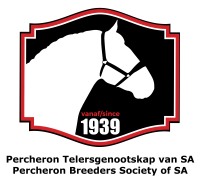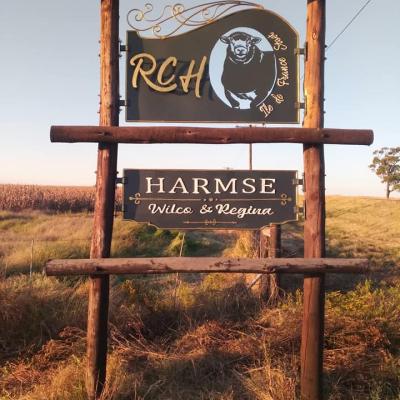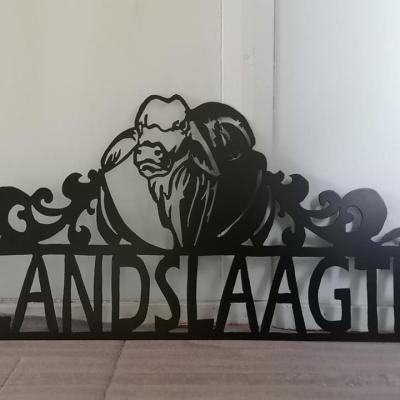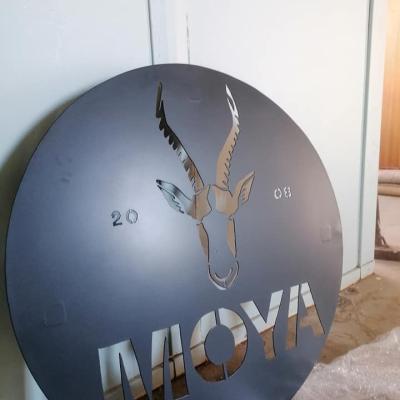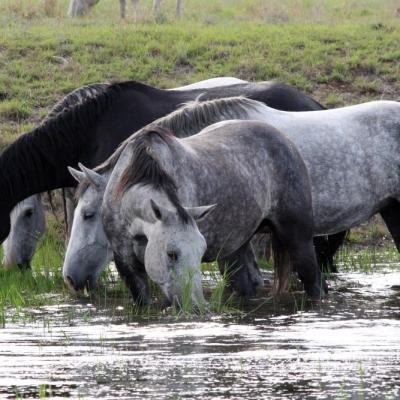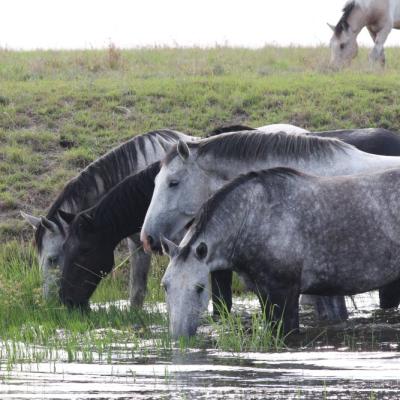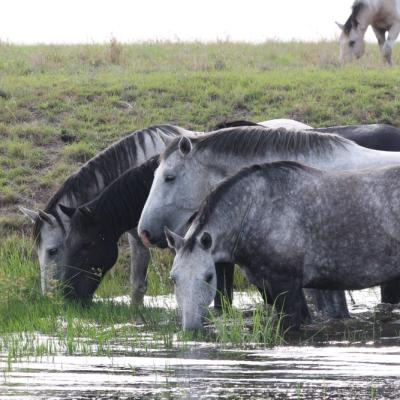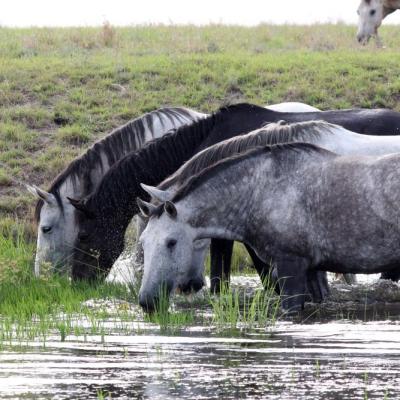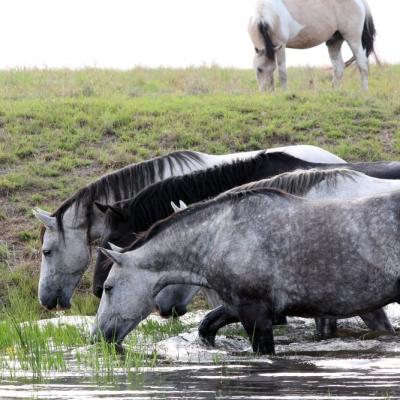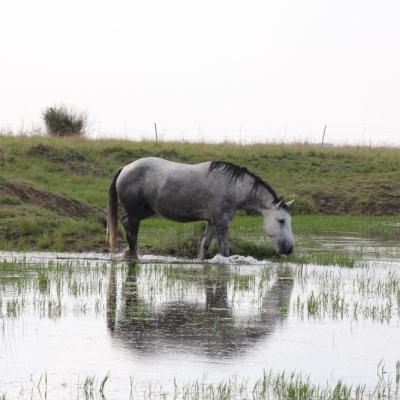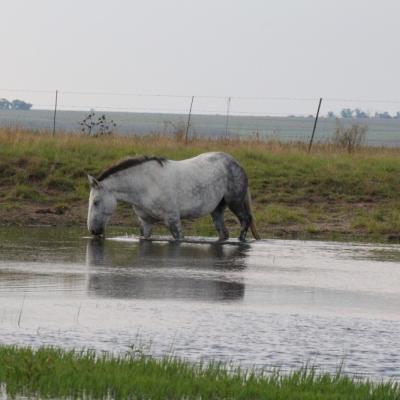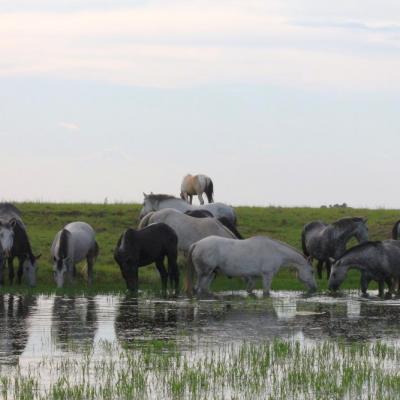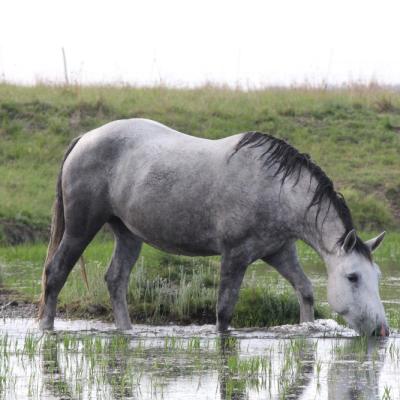Bonkige Bosmar Stoet
Percheron & Percheron Sport Horses
Christi Boshoff Marais
"Since I can remember, I've been obsessed with horses. As a little girl, my artistic talent was always very strong, and I quickly became known as the girl who not only loved horses but could also draw them. My love for horses and my passion for art have always gone hand in hand, shaping who I am."
Sharing my dads' passion for horses. He was an experienced rider and even rode for the Northern Free State Gymkhana team in his late twenties. My artistic talent was always very strong, and I quickly became known as the little girl who not only loved horses but could also draw them. Horses and art have been a big part of my life from the start."
My passion for horses was far bigger than my love for art and that led me to pursue Equine Science at the University of Technology in Pretoria after finishing school. After completing my practical year and thesis, I earned my B Tech Equine Science Diploma in 2006."
A Life Shaped by Horses
Growing up as the youngest of four daughters, horses were always a part of my life. My sisters and I could all ride, and we loved it. However, my passion for horses became more serious when I was about 14, around the time my father started the Pleasure Riding Club in Heilbron. We needed more horses so that everyone could ride together, and at first, we borrowed horses for our pleasure rides, which were often as long as 35 kilometers. But that came with its risks—unpredictable horses, uncertain temperaments. We knew we had to find a better way.

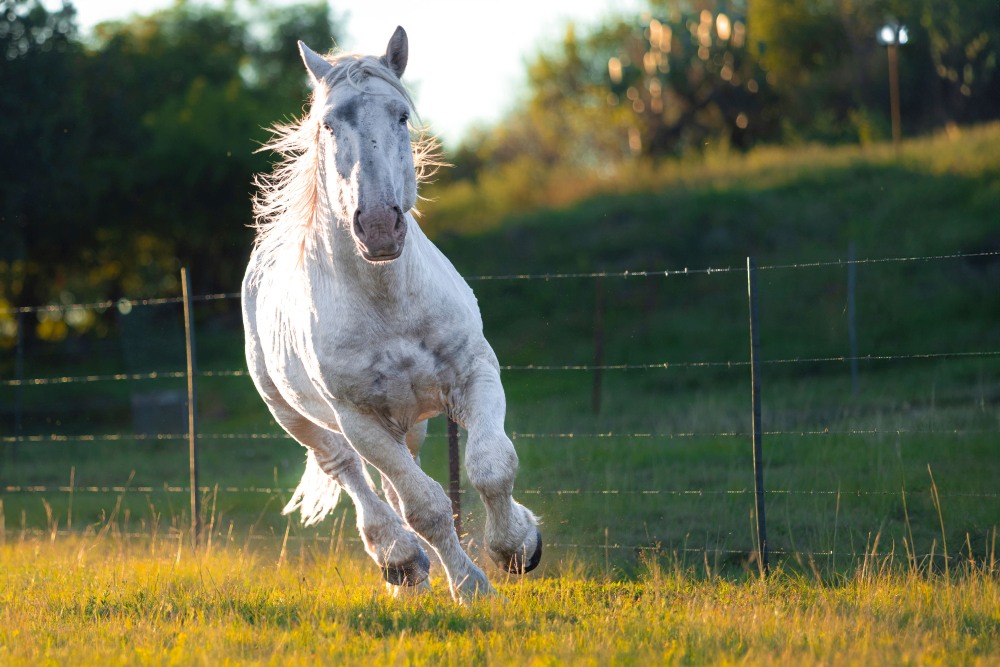
INTRODUCTION
Of all draught horse breeds the PERCHERON is certainly the most popular.
The Percheron horse played a major role in the feeding of the South African nation during the late 19th and early 20th century.
In the Boland and Swartland the Percheron horse was the animal tractor to cultivate vineyards and to produce wheat to feed the South African nation.
BREED EXCELLENCE
GENERAL APPEARANCE
The Percheron’s ideal height should be 16 to 16½ hands and must give the impression of weight and strength. It should be well balanced, with an adequately developed bone structure. He should move comfortably with his head lifted high and should be easy to handle. His weight should be more or less 908 kg. If the Percheron is used correctly, he is easy to handle, a willing worker and a pleasure for the eye.
COLOUR
Normally blue-grey or black with a possibility of brown, bay and chestnut within. Grey and Black are more preferable. Spots of different shapes and sizes are found. White is often found on the knuckle-bone and knuckle joint, but too much white is not desirable.
HEAD
Medium-sized, relatively long, wide between the eyes, fine lineaments, with intelligent and lively expressions. Eyes have to be big and prominent; ears medium-size and straight up. The jaw bone must be clearly outlined.
NECK
Medium-long, fine cut, nicely attached to shoulders.
SHOULDERS
Long, decline angles of more or less 45 degrees which enables the horse to carry his neck and head graciously.
BREAST
Broad, deep with forelegs well-placed.
BACK
Short and straight, with ribs strong and broad, over the loins and deep flanks. The middle should be broad.
HIND
The croup must be long, more or less straight and well muscled. Seen form the back, the horse must be as wide over the flanks, as over the hips. The thigh and gaskin must be heavily muscled.
LEGS
Front legs: Forearms well muscled.
Knee
Broad and deep. The long bone (tubular bone), short, clean and well developed. The sinew strong and clearly observable.
Knuckle-jaw
Front to back wide and knuckle-bone fairly long with an angle of 45 to give freedom of movement.
Knuckle-bone
Clean of ring bone and splints.
Feet
Big with openings at hocks.
Backlegs
From the back the hocks must be fairly wide apart. Sideways; straight form the hock to the knuckle-bone. The hocks must be big, but not rough. The long bone, flat and wide to show good quality.
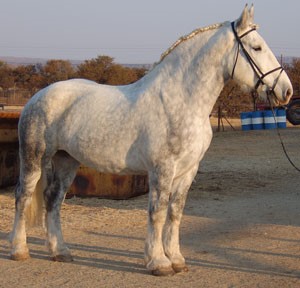

MOVEMENT
The horse should move straight while walking or jogging. The walk is very important as it is the pace with which the horse moves as it executes its work. The pace must be long and feet must be lifted up briskly. The hocks are close to each other when walking or jogging.
Percherons are preferred for their size, weight, attractiveness, quick, naturally solid speed, alertness, strength and docile behaviour patterns. The Percheron is the best balanced breed of the larger breeds and can do any kind of word on the farm due to its adaptability, sturdiness, capability, strength and easy pace. The Percheron's adaptability is outstanding and it is a most popular horse for farming purposes.
THE ORIGIN OF THE BREED
According to information the Percheron horse originated when Charles Martel, King of Old France overcame the Moslem army between Tours and Poitiers in central France. These battles occurred in 732 AD.
It is widely speculated that among the horses used by the French for horse breeding were a number of Arabian desert horses. The French captured these horses after turning back the invasion by the Moslems and other nations from the East.
Some ten centuries later, during the latter part of the middle ages when Crusaders invaded the Holy Land, more Arabian blood was infused into the domestic horses of France. The French Revolution nearly spelt the end of the Percheron breed. From the start of the revolution in 1789 to the early 1800's, horse breeding was suspended and suppressed.
When breeding later resumed, another Arabian influence is said to have occurred. Two Le Pin Arabian stallions GODOLPHIN and GALLIPOLY were allegedly used to help the breed recover. In the 19th century the French government established a stud at Le Pin for the development of the army mounts. In 1823 a horse named Jean Le Blanc foaled in Le Perche and all of the present Percheron bloodlines trace directly back to this horse.

The development of French draught horses continued and buyers began demanding larger horses. Horses form other districts in France were being used to enlarge the horses of the Perches district from a 454kg - 545 kg coach horse to a 1157kg draught horse.
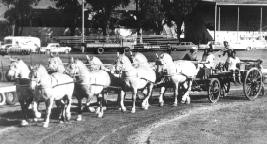
As the French draught horses became more popular amongst buyers some horses were being labelled as Percherons and were bred more for size, weight and strength. The first Percherons were established in America in the 1840's.
During 1851 three Percheron stallions, Normandy 351, Louis Napoleon 281 and Gray Billy were imported from France.
By 1915 nearly 40 000 Percheron brood mares were registered in America and soon the number of Percherons on American farms and roads were three times more than that of all other draught horse breeds combined. The work horse contributed significantly to the development of America during the 19th and early 20th centuries.
